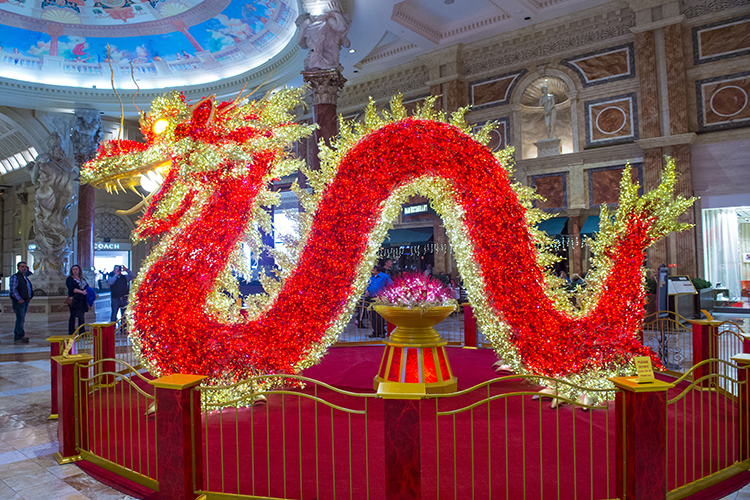
In a growing number of U.S. hotels, fried noodles and congee are joining the bacon and eggs on the breakfast buffet, chopsticks are lining up alongside the forks and staff are being trained to say “huanying” as well as “welcome”.
Chinese travelers are flocking to America – where they’re being welcomed with open arms particularly following a 2014 visa agreement, which extends business and tourism visas from China to the US (and vice versa) from one year to 10 years.
The US government is aiming to encourage Chinese travel to the US to help boost the tourism sector as well as the wider economy. And for good reason – Chinese travelers are predicted to spend $85 billion in the U.S. by 2021.
A taste of China in America
Many Chinese travelers are coming to the US for the first time, and while they want new experiences, they also like their home comforts. “Some first-time Chinese visitors to the US or Europe have similarities with American travelers to Paris 20 years ago who would stay at the Marriott or Hilton and order a burger,” says Pierre – Edouard Vintrou, JLL’s Senior Vice President Hotel Asset Management in EMEA.
The trick for hotels, particularly luxury brands, is luring Chinese tourists who traditionally prefer to splash out on shopping trips and spend less on accommodation.
What big luxury chains, such as InterContinental, Hilton, Starwood, and Marriott, are doing to attract this burgeoning market involves creating an atmosphere that caters to Chinese travelers, making them feel more at home.
InterContinental is training its staff to speak Mandarin as part of its Zhou Dao program (Zhou is the hotel’s Chinese name, and Dao can refer to the road one travels.) The hotel group also accepts China UnionPay bankcards, offers Chinese television channels, and serves Chinese tea.
Hilton, under its Huanying (welcome) program, provides Chinese customers with slippers, Chinese television programs, electric tea kettles, and congee (rice porridge), fried dough fritters, and dim sum with breakfast.
Starwood, as part of its Starwood Personalized Travel program, added Chinese selections in its breakfast buffet such as noodles and porridge as well as menus in Chinese. The program also offers slippers, in-room tea kettles, and translated welcome materials to its Chinese guests. Meanwhile, Marriott has joined forces with Alipay (a Chinese payment app) to make payment easier for Chinese travelers.
The local experience
Although first-time visitors might prefer certain reminders of home, more experienced travelers wish to soak up the local culture.
“More and more, Chinese travelers want the local experience,” says Vintrou. “The lifestyle in China is very different from that of the US and Europe. Chinese travelers really want to experience the local lifestyle. If they do want Chinese food, they go to Chinatown.”
Instead of focusing on creating a Chinese experience, Vintrou says that successful hotels are “mindful of the whole journey, not just the hotel.” He cites two-hour swimming classes in the Maldives before a scuba diving session, wine tasting in France, and cooking classes with celebrity chefs.
This mindfulness includes offering local knowledge and helping guests to seek out the best prices for goods and services to improve their overall experience.
Market to Chinese in China
The best way for hotels to attract Chinese guests is to reach them on their own territory, says Vintrou. “Hotels need to be visible in China and have a proper online strategy,” he says. And that includes not just translating an already existing hotel website into Mandarin. A website should be designed with the audience in mind, which requires a certain understanding of the culture and achieving the correct dialect and tone.
Hotel marketers should also realize that there isn’t just one Chinese market and that segmentation is important. “Some Chinese travelers come in groups, some want luxury accommodations, and young travelers especially tend to be more adventurous and will travel independently,” says Vintrou who notes that hotels in some instances should also have an offline strategy and work with travel agents.
Smartphones and social media
Marketing efforts need to revolve around smartphones. As of October 2015, there are more cellphone users in China than anywhere else in the world; 90 percent of people in the Middle Kingdom own cellphones (three-fourths are smartphones). “This is where the activity is,” says Vintrou.
Chinese people might not be on Facebook or Twitter, but they do have Weibo and WeChat. “It’s important to be visible there to reach a Chinese audience,” says Vintrou. The Ritz Carlton, for example, maintains a page on Weibo. Having a presence on Ctrip, China’s leading travel service provider, is also important.
While catering specifically to Chinese tourists is a new area for many hotels, Vintrou points to the Hualuxe brand as one that might provide valuable insight. Part of the InterContinental Hotels Group, Hualuxe is the first international upscale hotel designed for Chinese people. “Hualuxe is only in China. It will be interesting to see whether that brand will expand outside of China,” says Vintrou.

